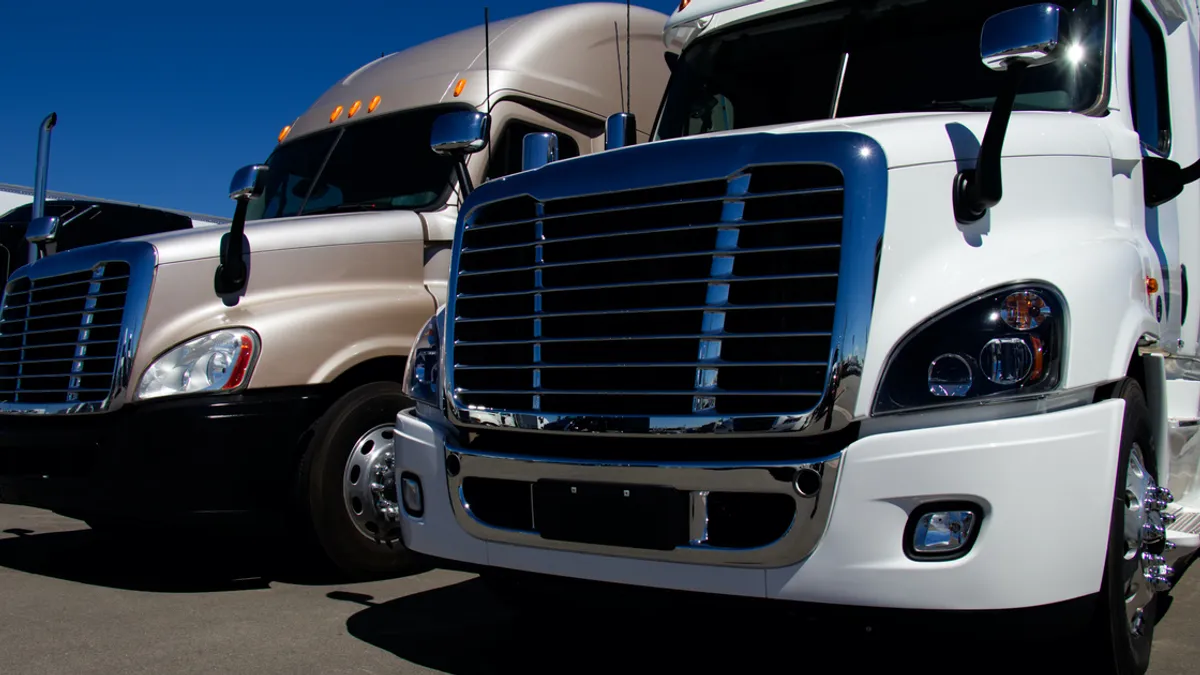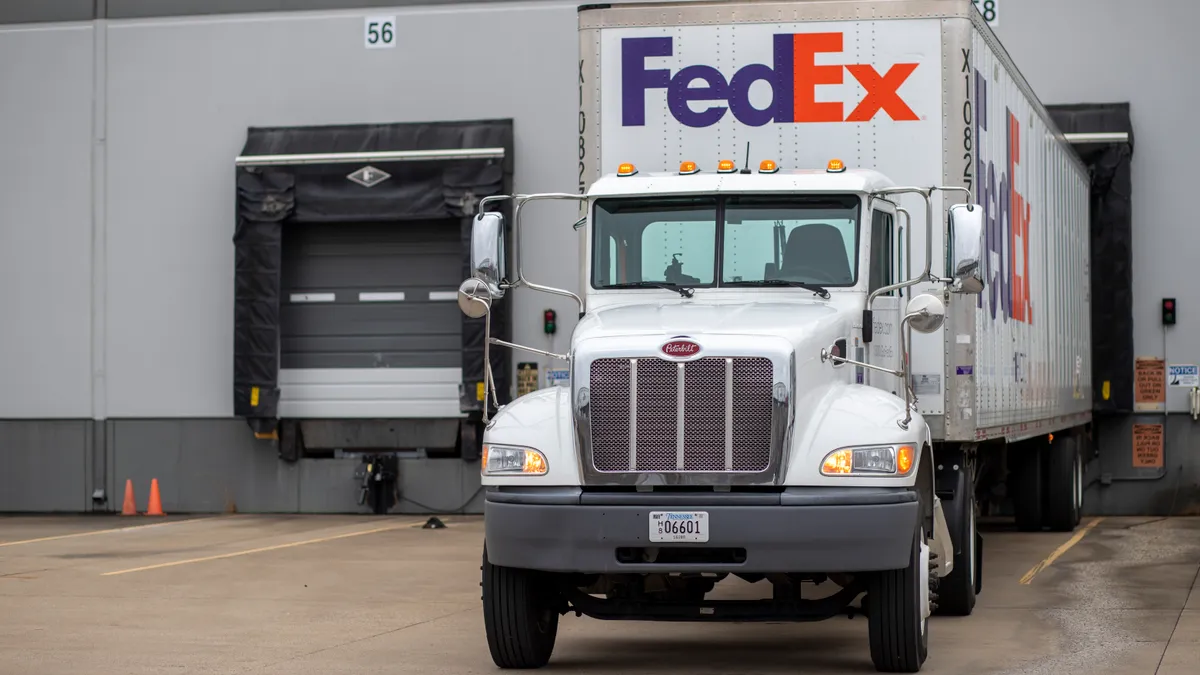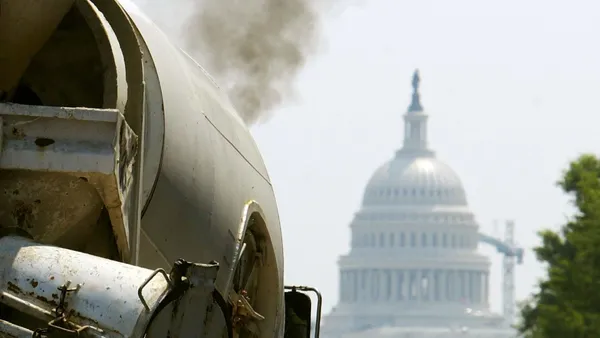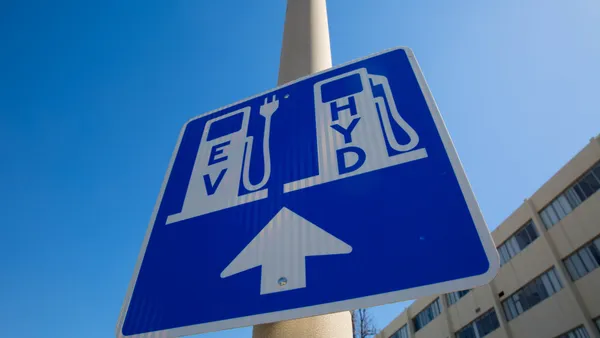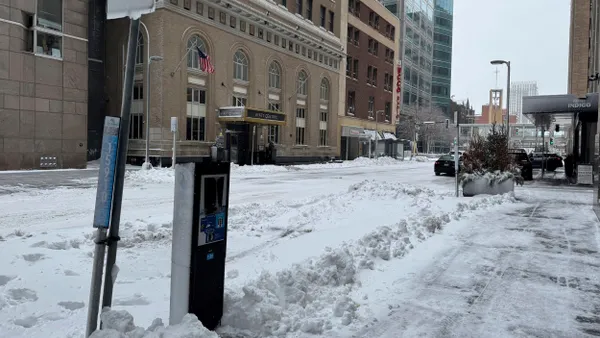This story is part of the Transport Dive Outlook on 2021, a series on the trends that will shape the industry in 2021. For a look at the business trends affecting other industries, see the Dive Outlook on 2021.
Class 8 orders to OEMs set a record in December, but experts say a recovering economy is not the main reason.
Instead, dealers and fleets are lining up for orders because they are concerned about production backlogs, said Don Ake, FTR vice president for commercial vehicles, echoing a conclusion reached among other trucking experts.
That concern translated to 52,100 North American orders in December, which was the fourth-largest order in history, Ake said. November was the third-largest month on record, at 52,600 units.
Class 8 net truck orders in North America
OEMs are slowly coming back to full capacity, but they are still adjusting to absenteeism caused by COVID-19, as well as measures taken to space out their workers.
OEMs are also dependent upon other manufacturers, and Ake said there are indications that suppliers may be behind in the production of raw materials and input components. The two main issues that have the trucking industry concerned are employees and steel, Ake said, even as OEMs have secured their own workforce fairly well for the production of trucks.
And then there is the economy. Fleets and dealers are fairly confident that COVID-19 can be dealt with effectively, and that will assist the economy in growing as 2021 progresses, Ake said.
Signs of a strong economy
The consumer is still keeping the economy busy, said Dean Croke, DAT principal analyst, even as manufacturing and building will likely slow in the first three months of 2021, with its cold weather. Fleets are not ordering in record numbers to plan for these months, though. They likely expect a stronger economy in the final three quarters of 2021, and just in case, want to reserve production slots at OEMs for new trucks.
"We will start to pull out of it as we start to get into the warmer months," said Croke.
Croke said more travel will stimulate the need for gasoline and other types of fuel, much of it moved by truck.
Ake agrees he sees a burgeoning economy as 2021 advances. And he sees a return to normalcy for manufacturing, which has been hobbled by COVID-19. If that happens, it would certainly stimulate the dry van sector, which heavily services manufacturing plants.
"The indication is manufacturing is starting to move," said Ake. "The first half looks solid. The year looks solid."
Still, given the volatile nature of 2020, Ake believes the initial months of 2021 will not necessarily indicate the boom about to come in the final three quarters of the new year.
"It could still be a bumpy ride for a couple of months," said Ake. "The economy is still in recovery mode ... The [trucking] industry is still attempting to catch up from the economy being shut down and restarted."
Spot rates surpass 2018 levels
And even now, there is a lot to do in Q1, as retailers and warehouse restock. DAT reported in December such activity will stimulate the trucking sector in Q1.
The adjusted demands caused by the pandemic have already caused trucking rates to surge in ways not seen since the freight boom of 2017-2018, Croke said. He said current spot rates are 36 cents a mile higher than the peak week in 2018.
The strength of the market, for now, may cause nerves among dealers and fleets, who want to make sure their fleet is ready to meet capacity, said Steve Tam, ACT Research vice president.
Another issue perhaps unrelated to the economy: fleets like to update their trucks, to make sure they are modern and fuel-efficient and equipped with the bells and whistles that can improve safety and performance. The better fuel efficiency alone is attractive to fleets, Tam said. Fuel efficiency can help pay for the new trucks over time.
"They would not be ordering trucks for the sake of ordering trucks."

Steve Tam
Vice president, ACT Research
It isn't just trucks being ordered. On Wednesday, FTR reported "fleet optimism" is pushing trailer orders up.
Tam said he forecasts 5.1% GDP growth in 2021, so economic expectations are likely the main motivation behind the trailer orders.
Combined with concern about factory slots, that creates record orders for trucks and trailers.
"They would not be ordering trucks for the sake of ordering trucks," said Tam.


